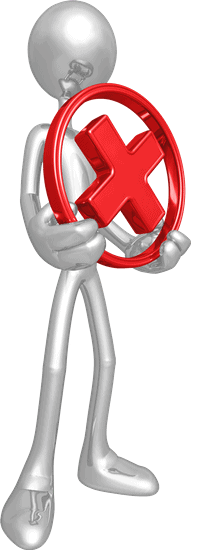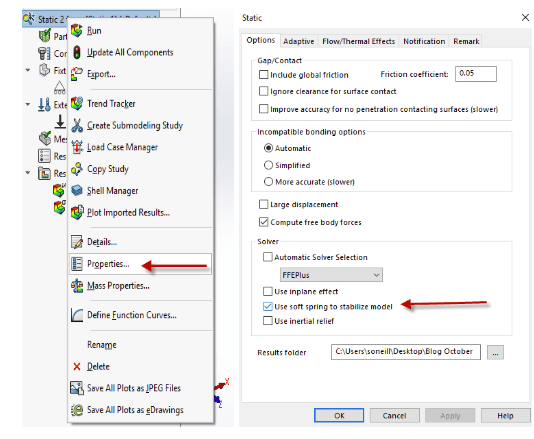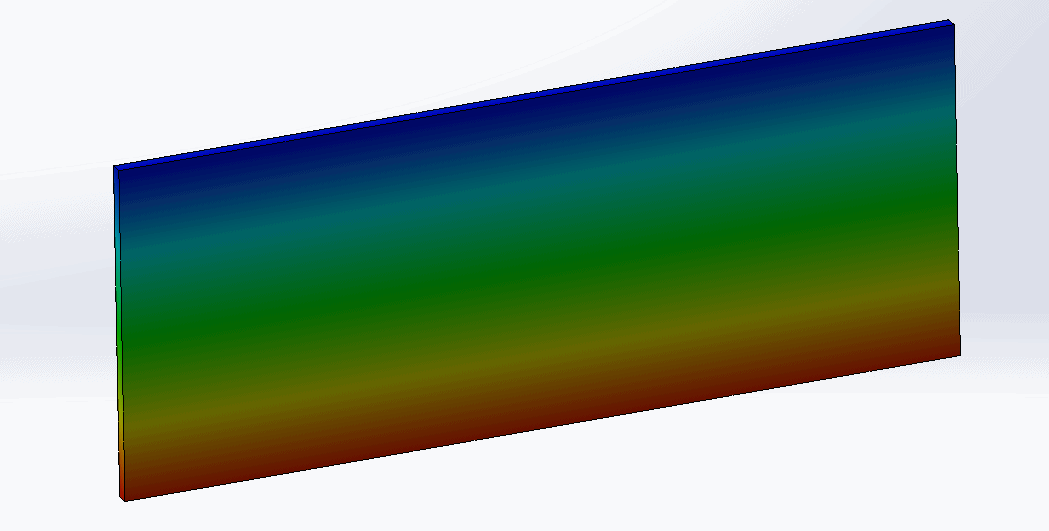How to Use the Soft Spring Method in SOLIDWORKS Simulation
 Imagine it’s 4:48 PM on a Friday and you’re running a static simulation in SOLIDWORKS Simulation when this message pops up, “Model may not have adequate fixtures.” As you slam your fist against your desk, you wonder if you’re going to be able to get this analysis finished in time. In this SOLIDWORKS Simulation tutorial, I’m going to show you a great new technique to overcome this pesky error and help you get the simulation results you need in order to meet your deadlines!
Imagine it’s 4:48 PM on a Friday and you’re running a static simulation in SOLIDWORKS Simulation when this message pops up, “Model may not have adequate fixtures.” As you slam your fist against your desk, you wonder if you’re going to be able to get this analysis finished in time. In this SOLIDWORKS Simulation tutorial, I’m going to show you a great new technique to overcome this pesky error and help you get the simulation results you need in order to meet your deadlines!
Before I jump into the SOLIDWORKS Simulation technique, it’s important to talk a bit about theory. The error pictured below is a common error in SOLIDWORKS Simulation and it often pops up over two different scenarios: The iterative solver has failed or you do not have adequate fixtures. In this case, the error is pointing to a lack of fixtures in our model (the model still fails if the solver is changed to a sparse solver.)

If you remember from statics, the basis of solving any static problem is through solving Newton’s laws of motion for equilibrium. If you have a model with little or no fixtures, you will be unable to solve the equilibrium equations. This is known as being statically indeterminate, and the problem will not have a unique solution.
Simply put, the model does not have enough restraints to solve the equations of motion. In an earlier blog called “How to Deal with Fixture Warnings in SOLIDWORKS Simulation”, I pointed out the tool the Underconstrained bodies utility, and the utility allows the user to identify where they need to restrain the model. In this blog, I demonstrate a tool called Soft Springs which is another tool to overcome inadequate fixtures in SOLIDWORKS Simulation.
In this example, I will use a pretty common model, a flat plate with a fixture assigned in one direction and two forces applied in differing directions. In the image below, the fixture is shown in green and is restraining the model in the global X direction. The forces are shown in pink and are applied in the global Y and Z directions respectively.

After finishing the setup of this model, I run the model but the “lack of adequate fixtures” warning appears that I mentioned earlier. There are two routes I can take to overcome this. I can either utilize the underconstrained bodies tool and then apply a fixture, or I can utilize the soft spring. In this case, I will utilize the soft spring approach.
What is the soft spring method
The soft spring method is a tool which stabilizes the model by applying a soft spring to every node in the model to stabilize the model. Adding this soft spring stabilizes the model and allows the program to complete the static analysis. (Note: This technique should only be utilized if you cannot apply any further fixtures to your model.) In this case, since applying further fixtures will change my overall design objectives, I am going to utilize the soft spring approach to solve this problem.
How to add the soft spring
The process of adding the soft spring is done by accessing the properties menu. The first thing you’ll need to do is right-click on your named study and select the properties. Upon opening the properties window, the soft spring option is available at the bottom. All you’ll need to do is check the soft spring box and then you can return the scenario.

After turning on the soft spring option I was able to run my model without any fixture errors and obtain the stress and displacement results I was after quickly and accurately!

I hope you found this SOLIDWORKS Simulation tutorial helpful. If you have any further questions about how SOLIDWORKS Simulation can help you design more efficiently, please contact us.
Related Articles
SOLIDWORKS Flow Simulation Tutorial: Fluid Flow Problems
How to Deal with Fixture Warnings in SOLIDWORKS Simulation
How to Design a Filtration Unit with SOLIDWORKS and solidThinking
About the Author
 Drew Buchanan earned a BS in Mechanical Engineering from the University of Pittsburgh, and an MS in Mechanical Engineering from Villanova University. He has been working with Computer-Aided Engineering (CAE) tools since the mid-2000s when he was an engineering co-op with Siemens Power Generation. Upon graduation, Drew worked in the Energy industry for six years working as a design and analysis engineer for design and analysis applications. He joined Fisher Unitech in 2015.
Drew Buchanan earned a BS in Mechanical Engineering from the University of Pittsburgh, and an MS in Mechanical Engineering from Villanova University. He has been working with Computer-Aided Engineering (CAE) tools since the mid-2000s when he was an engineering co-op with Siemens Power Generation. Upon graduation, Drew worked in the Energy industry for six years working as a design and analysis engineer for design and analysis applications. He joined Fisher Unitech in 2015.

 Blog
Blog 